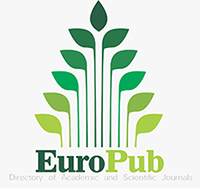Sağlık Çalışanlarında İki Doz Coronavac Aşısı Sonrası SARS-CoV-2 Antikorlarının Değerlendirilmesi: Retrospektif ve Gözlemsel Çalışma
aşılama sonrası antikor düzeyleri
DOI:
https://doi.org/10.5281/zenodo.6965986Anahtar Kelimeler:
antikor düzeyi- aşılama- CoronaVac- immunizasyon- sağlık çalışanlarıÖzet
Amaç: Pandemi sürecinde fiziksel mesafe, karantina ve izolasyon önlemleri kısa vadede enfekte olan insan sayısını sınırlamada etkili olmuştur. Ancak COVID 19 tedavi ve korunmasında etkili olacak özel ilaç ve aşılar gerekmektedir. Çalışmamızda inaktif Coronavac aşısı sonrası antikor düzeylerinin karşılaştırılması amaçlanmıştır.
Yöntemler: Çalışmamıza hastanemizin sağlık çalışanlarından 2 doz CoronaVac aşısı olanlar dahil edildi. İkinci aşı dozundan 4 hafta sonra ölçülen kan antikor seviyeleri yaş, cinsiyet ve çalışılan ünitelere göre karşılaştırıldı. Çalışmamız retrospektif ve gözlemsel bir çalışmadır
Bulgular: Çalışmaya toplam 491 sağlık çalışanı dahil edildi. Toplam antikor seviyeleri, yaş ve cinsiyet arasında anlamlı bir ilişki saptanmamasına rağmen, COVID-19 enfeksiyonu olanlarda antikor seviyeleri anlamlı olarak daha yüksekti (P < 0.001). Riskli birimlerde çalışan ve çalışmayan ve COVID-19 enfeksiyonu olan sağlık çalışanlarının antikor düzeyleri, çalışmayanlara göre istatistiksel olarak anlamlı düzeyde daha yüksekti (P < 0,001)
Sonuç: Çalışmamızda elde edilen bulgular, COVID-19 açısından aşı ile desteklenen doğal bağışıklığın kazanılmış bağışıklıktan daha değerli olduğunu göstermiştir.
İndirmeler
İndir
Yayınlanmış
Nasıl Atıf Yapılır
Sayı
Bölüm
Lisans
Telif Hakkı (c) 2022 Chronicles of Precision Medical Researchers

Bu çalışma Creative Commons Attribution-NonCommercial-ShareAlike 4.0 International License ile lisanslanmıtır.






